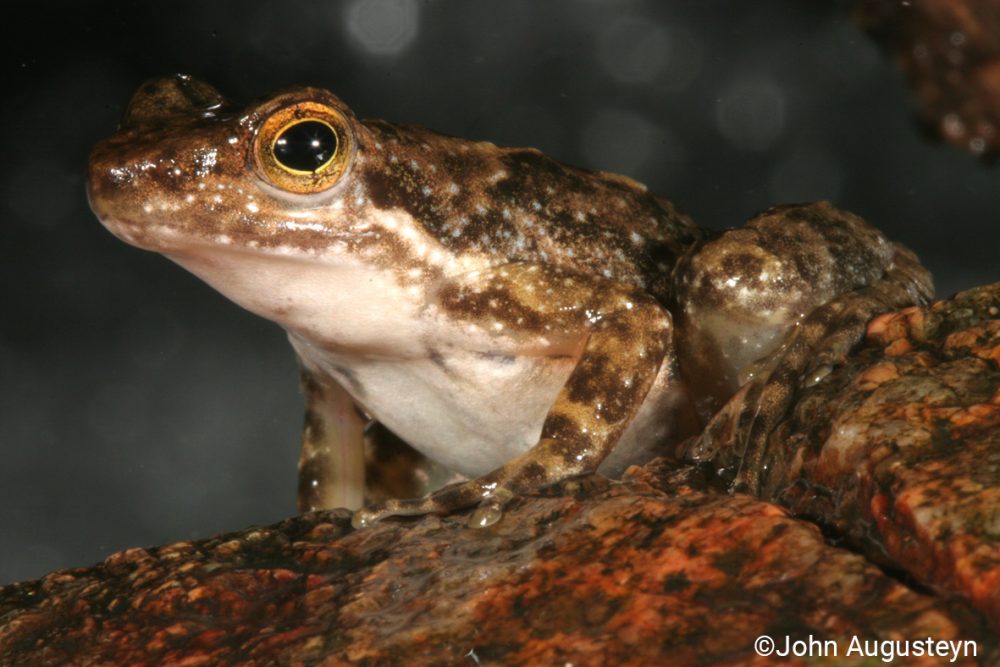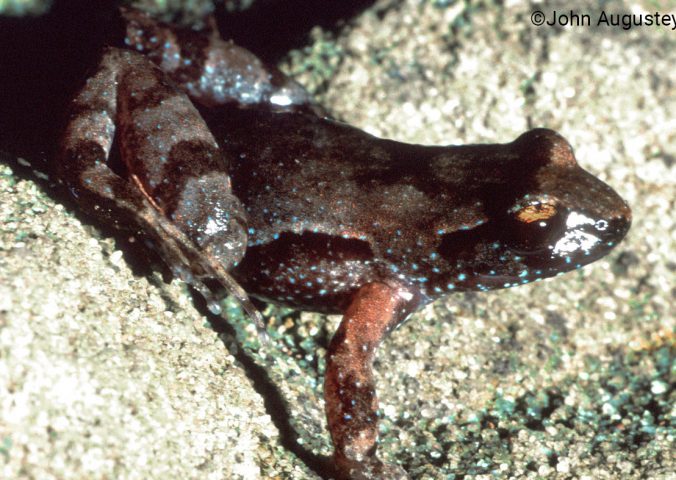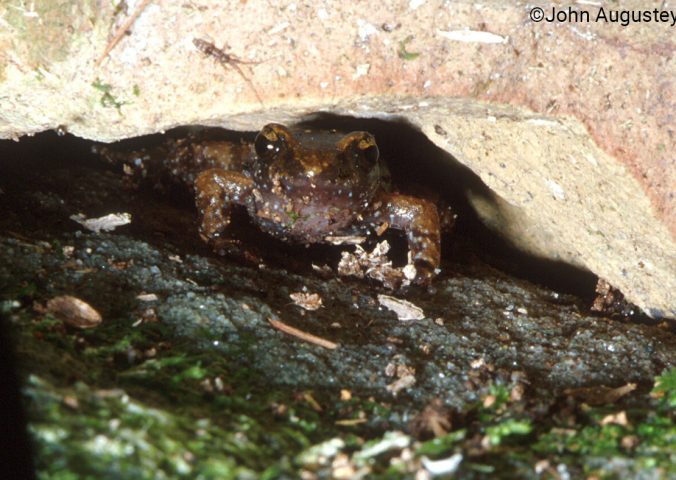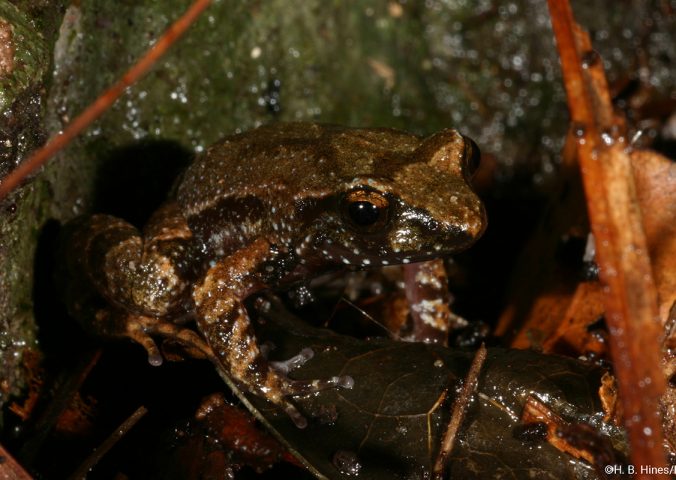About
The Kroombit tinker frog is a small frog from northeastern Australia that reaches lengths of only 2.5 cm.
This species is highly cryptic, meaning it employs markings and colouration which provide excellent camouflage in its natural environment. Very little is known about the ecology and life history of the species.
The Taudactylus genus of frogs, to which this species belongs, diverged from all other amphibians over 65 million years ago. This means this group of frogs has been evolving in isolation since before the extinction of the dinosaurs!
The low population number, isolation and extremely restricted distribution of the species make it highly susceptible to demographic instability, disturbance and extinction. The main threats to the Kroombit tinker frog are wildfire, predation and habitat degradation; which is mainly due to timber harvesting in the area. Chytrid fungus is a disease associated with declines of similar species elsewhere in Australia, and it is also likely to have impacted the Kroombit tinker frog populations.
Much of the species’ habitat is protected within Kroombit Tops State Forest. Research and monitoring of the populations is in place and the Australian government has drafted a recovery plan for the species.
- Order: Anura
- Family: Myobatrachidae
- Population: <13 at one site
- Trend: decreasing
- Size: 25mm
EDGE Score
Distribution
The Kroombit tinker frog is endemic to Queensland, Australia. It resides in 9 fragmented rainforest patches over 500 metres altitude, with a total area of 200 hectares.
Habitat and Ecology
The species is found in piccabeen palm rainforests and boulder scree gullies over 500 metres altitude. This is a cryptic species which hides in its’ environment and it is often found in rocky areas, often under rocks near streams and sheltered areas. This species are active during summer months, often near water courses. The breeding season is thought to be initiated by the first heavy rainfalls of spring and summer. Males call from concealed areas, where they become territorial.



